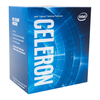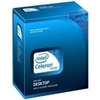-
Home
-
Contributors
-
International
-
Account
-
Information
More From Contributor
- Box Celeron G1620 2.70GHZ 2C 2T 2M S1155 Product Type
- Processor Processor Core
- Dual-core (2 Core) 64-bit Processing
- Yes Processor Manufacturer
- Intel Direct Media Interface
- 5 GT/s L1 Cache
- 128 KB L2 Cache
- 512 KB L3 Cache
- 2 MB Clock Speed
- 2.70 GHz Processor Socket
- Socket H2 LGA-1155 Product Model
- G1620 Package Type
- Retail Product Line
- Celeron Platform Supported
- PC Process Technology
- 22 nm Thermal Design Power
- 55 W Graphics Controller Manufacturer
- Intel Graphics Controller Model
- HD Graphics Product Family
- Celeron ...
- G1820 Number of Cores
- 2 Number of Threads
- 2 Clock Speed
- 2.7 GHz Intel Smart Cache
- ...
- Intel G1840 Family
- Intel Celeron Dual Core Core Frequency
- 2.8 G Hz Bus Speed
- 5 GT/s DMI clock ...
- Intel G1850 Family
- Intel Celeron Dual Core Core Frequency
- 2.9 G Hz Bus Speed
- 5 GT/s DMI clock ...
Specification Performance of Cores 2 of Threads 2 Processor Base Frequency 3.20 GHz Cache 2 MB Smart Cache Bus Speed ...
...
- Intel Celeron G550 Number of Cores
- Dual-Core Number of Threads
- 2 threads ...
Intel Celeron G4930 8th Gen Processor
Intel Virtualization Technology (VT-x) Intel Virtualization Technology (VT-x) allows one hardware platform to function as multiple “virtual” platforms. It offers improved manageability by limiting downtime and maintaining productivity by isolating computing activities into separate partitions. Intel Virtualization Technology for Directed I/O (VT-d) Intel Virtualization Technology for Directed I/O (VT-d) continues from the existing support for IA-32 (VT-x) and Itanium processor (VT-i) virtualization adding new support for I/O-device virtualization. Intel VT-d can help end users improve security and reliability of the systems and also improve performance of I/O devices in virtualized environments. Intel VT-x with Extended Page Tables (EPT) Intel VT-x with Extended Page Tables
(EPT), also known as Second Level Address Translation (SLAT), provides acceleration for memory intensive virtualized applications. Extended Page Tables in Intel Virtualization Technology platforms reduces the memory and power overhead costs and increases battery life through hardware optimization of page table management. Intel 64 Intel 64 architecture delivers 64-bit computing on server, workstation, desktop and mobile platforms when combined with supporting software.¹ Intel 64 architecture improves performance by allowing systems to address more than 4 GB of both virtual and physical memory.
- External links may include paid for promotion
- Availability: In Stock
- Supplier: Ebuyer
- SKU: 883162
Product Description
Intel Optane™ Memory Supported Intel Optane™ memory is a revolutionary new class of non-volatile memory that sits in between system memory & storage to accelerate system performance & responsiveness. When combined with the Intel Rapid Storage Technology Driver, it seamlessly manages multiple tiers of storage while presenting one virtual drive to the OS, ensuring that data frequently used resides on the fastest tier of storage. Intel Optane™ memory requires specific hardware & software configuration. Intel Turbo Boost Technology Intel Turbo Boost Technology dynamically increases the processors frequency as needed by taking advantage of thermal & power headroom to give you a burst of speed when you need it, & increased energy efficiency when you don’t. Intel Virtualization Technology (VT-x) Intel Virtualization Technology (VT-x) allows one hardware platform to function as multiple “virtual” platforms. It offers enhanced manageability by limiting downtime & maintaining productivity by isolating computing activities into separate partitions. Intel Virtualization Technology for Directed I/O (VT-d) Intel Virtualization Technology for Directed I/O (VT-d) continues from the existing support for IA-32 (VT-x) & Itanium processor (VT-i) virtualization adding new support for I/O-device virtualization. Intel VT-d can help end users improve security & reliability of the systems & also improve performance of I/O devices in virtualized environments. Intel VT-x with Extended Page Tables (EPT) Intel VT-x with Extended Page Tables (EPT), also known as Second Level Address Translation (SLAT), provides acceleration for memory intensive virtualized applications. Extended Page Tables in Intel Virtualization Technology platforms reduces the memory & power overhead costs & increases battery life through hardware optimization of page table management. Intel 64 Intel 64 architecture delivers 64-bit computing on server, workstation, desktop & mobile platforms when combined with supporting software.&sup 1; Intel 64 architecture improves performance by allowing systems to address more than 4 GB of both virtual & physical memory.
Reviews/Comments
Add New
Intelligent Comparison
We couldn't find anything!
Perhaps this product's unique.... Or perhaps we are still looking for comparisons!
Click to bump this page and we'll hurry up.
Price History
Vouchers
Do you know a voucher code for this product or supplier? Add it to Insights for others to use.


 United Kingdom
United Kingdom
 France
France
 Germany
Germany
 Netherlands
Netherlands
 Sweden
Sweden
 USA
USA
 Italy
Italy
 Spain
Spain














 Denmark
Denmark